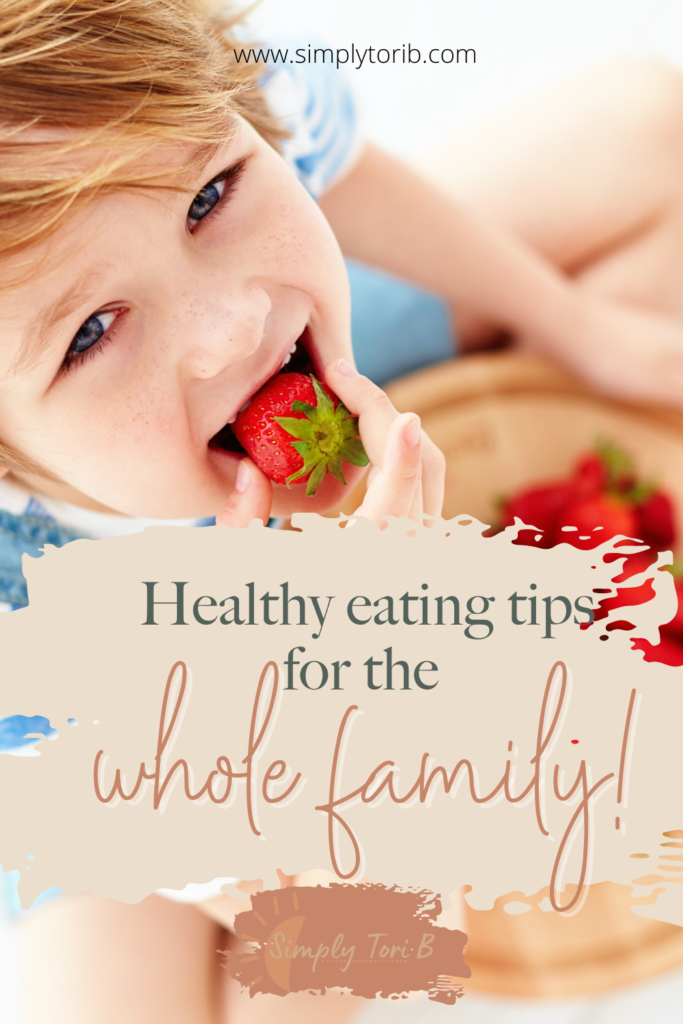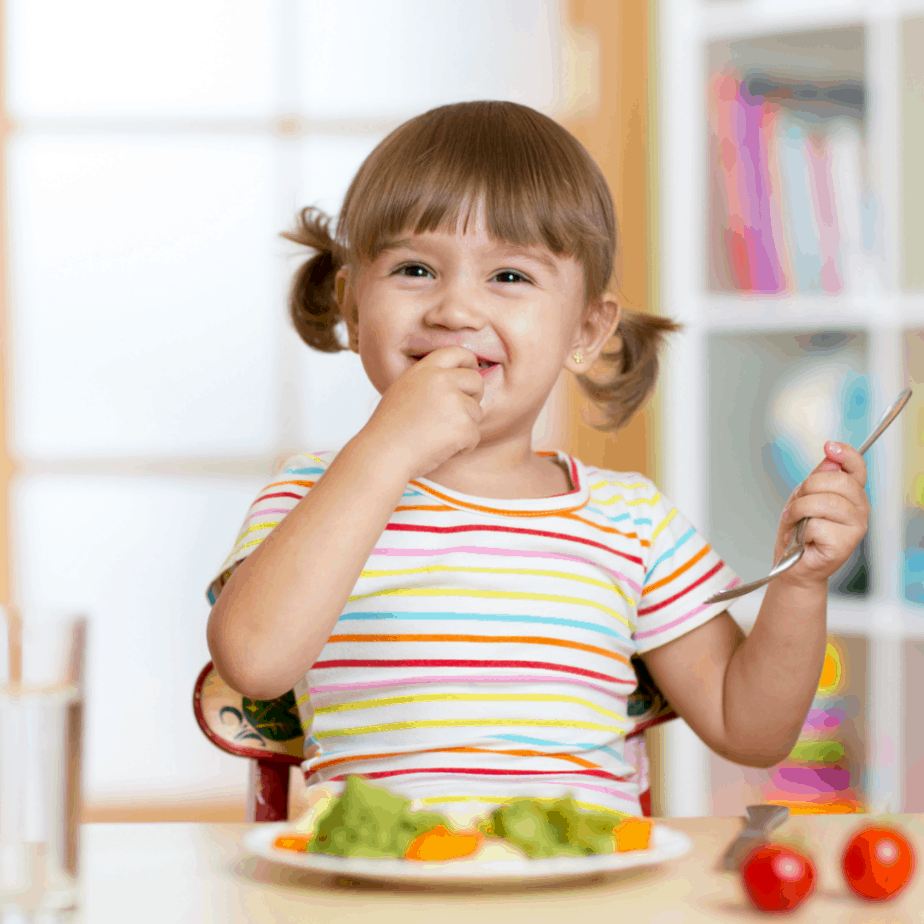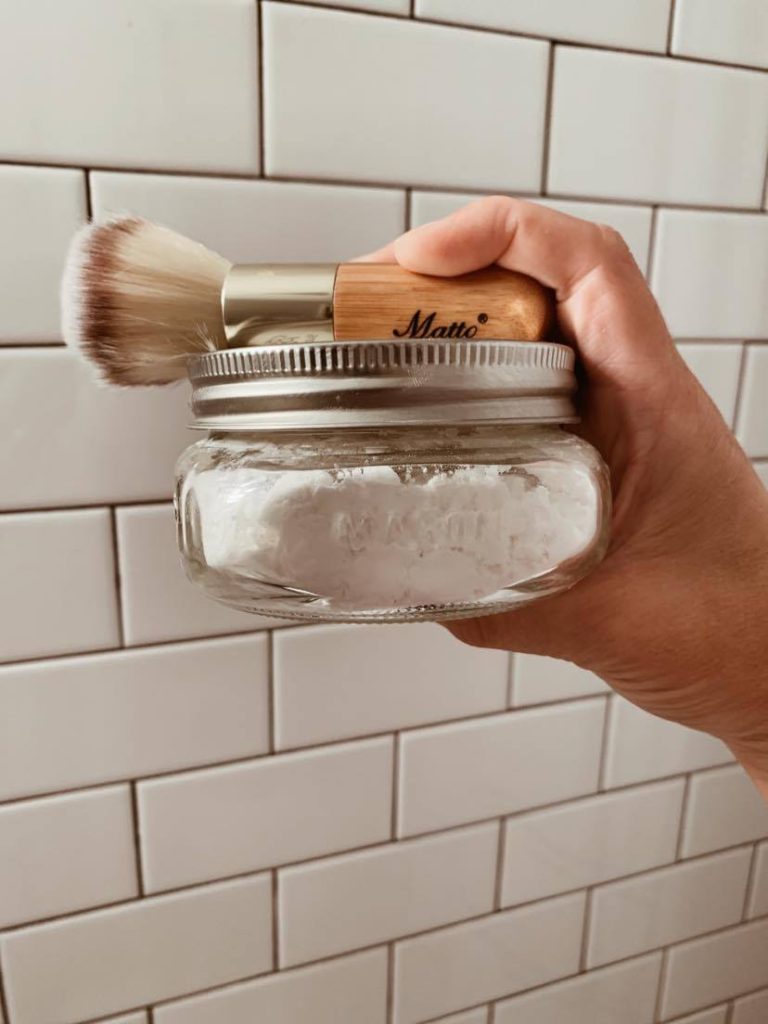Healthy Eating for the Whole Family
I truly love health and wellness, but I’ll be honest- healthy eating is not my strong suit. I know that whole foods are important and to eat less processed options, but that’s about the extent of my knowledge.
BUT DON’T LEAVE! I recruited professional help.
That’s why I asked my friend, fellow RN, and holistic nutrition advocate Bekah Shephard to be a guest on my blog and tell us about healthy swaps and healthy eating for the whole family. On her Instagram @bekahshephard and her blog, she shares lots of fun tips and tricks for finding healthy options that even the kids will enjoy!

So let’s jump straight to the good stuff. Here’s an article that was written by Bekah herself to help us get one step closer to that healthy lifestyle!
How do I get my family to eat healthy?
Start small
Healthy eating really isn’t complicated. But we, being human beings, make it complicated. The best way to start down the path of healthy eating is to just start with one thing to swap out.
Seriously, that’s it.
Just choose one food to do a healthy swap on. It could be the Oreos. It could be the Lunchables. It could be the breakfast cereal. But pick one. You could hem and haw over how to get started for ages when, in reality, you just need to start with something and not everything.
Once you’ve conquered one food swap, move on to another.
Baby steps are the key to getting your family on board with healthy eating habits with lasting changes. If you try to overhaul your family’s diet in one day, you’re going to have a full-on rebellion on your hands.
Make it fun
Making it fun is another key that’s needed when the kids are involved. If you’re excited about new food, they feed into that (no pun intended!). Get them involved in picking out the new healthy version. And get them involved in helping to make the new food or meal and they’ll be more excited to eat it or to at least try it.
I’m sure you’ve all heard about the no thank you bite concept, right? Well, we’ve changed that up a bit at our house. Yes, my kids have to try a no thank you bite. If they don’t like it, then they eat some of the other food. But then I ask them to take another bite of the food they didn’t care for to see if they like it this time around. If not, they eat the other food. But before they’re excused they have to try one more bite. (Of course, if my experimental meal or food is terrible, I don’t make them eat it – not every meal is a success!)
Why? Because “You may not like it the first time, or the second time, but maybe the third time!”
My kids have taken to this way of thinking very well when it comes to trying new foods or foods they previously didn’t like. Their taste palate has grown because they took more than just that one bite.
It’s kind of like when kiddos are infants and just starting on solids. If they want nothing to do with the food you offer, that’s okay. Just keep offering it. Eventually, they’ll end up trying it. Maybe it just means cutting it up a different way of serving it on a plate instead of a bowl. Just keep offering it.
Obviously, the “try it three times” won’t work for every child. But I encourage you to give it a try or be creative and come up with your own fun way of having more than just one bite taken.
Kids, being kids, will most likely love a healthy swap one day and make you feel like you’re ready to move on to another one. And then the next day they decide they hate it. It happens. Try the “try it three times” trick, or realize that, just like us, they sometimes tire of the same foods. But don’t go back to the unhealthy version.
You know your kids best and how much change they can handle at one time. Take the healthy swaps slowly if your child is struggling. Give some extra snuggles when they melt down about the change. Acknowledge that it can be hard. Discuss why it has to be done if they’re old enough to understand that, but don’t undo the change. Don’t cave into going back to the other food. Once you’ve decided on a change for your family, stick with it.

Try other flavors of the same healthy options
The answer may be a simple switch of flavors. For example, Larabars are a treat for my kiddos, but also one we pack for when we’re on the go. One week they loved the Peanut Butter Banana flavor. The next week they hated it. Instead of going back to the old Little Debbie treats, we tried a new flavor of Larabar. And another. And another. But finally, they found a few that they like to rotate through.
Now this will probably go against what a lot of people think these days, but I also play the mom card when it comes to eating. That means mom’s kitchen isn’t a restaurant. I offer a variety of foods at dinner time, but I’m not making four different meals to appease everyone … unless it’s leftovers night! If they’ve tried their three bites on a food they say they don’t like (that they loved just last week!) then fine, don’t eat it. But this is dinner. There’s plenty to choose from, so fill your belly with something because I’m not making any more.
At my kids’ ages (almost five and eight), they’re old enough to understand this and why. When they were toddlers, yes, it was a bit different, but I still offered a variety of food and gave them the choice of what to eat on their plate. There were plenty of times when they were little that they ate their reheated lunch or dinner. I only coddle my kids so far when it comes to wasting food.
I do try to keep in mind, though, that whatever food they say they don’t like may just need a break for a bit, but that doesn’t mean it’s off the menu completely.
As a side note, when I experiment with a meal, I usually make sure I DO have leftovers as a backup, just in case it really does taste awful!
But sometimes, you just have to put your mom voice on.
How to feed your family healthy foods?
You can have the best of intentions when you walk into that grocery store, thinking to yourself “I’m only going to buy healthy foods.” Then you realize, as you’re walking down the aisle, that you’re not really sure what’s healthy and what’s not. I mean, sure, we all know fruits and veggies are healthy, but what about the boxed oatmeal? What about the protein bar? What about the lunch meat?
It all becomes overwhelming very quickly.
It’s easy to say “avoid all processed foods”, but in reality, most foods are processed to some degree. Even your bagged apples are technically “processed” because they were placed in a bag. It’s been altered from its original state of hanging on the tree and unless you’re picking it yourself and eating it right then and there, it’s considered processed.
So the best way to start thinking about it is to look at a breakdown of how much processing has been done to a food. The degree to which it has been processed:
Types of processing:
- Unprocessed or minimally processed – foods that are still in their natural state or at least very close to it. Foods like frozen fruits and veggies, plain yogurts, or meats such as plain hamburger meat, steak, etc.
- Processed foods – these are foods that have had ingredients added to them such as salt, sugar, or fats. Canned fruits and veggies, packaged jerkies, and some breads are examples that fall into this category.
- Ultra-processed foods – these are the foods that have dyes, stabilizers, emulsifiers, and preservatives in them. There’s very little of the natural food left in them. They’re typically high in calories and low in any nutrients. Foods such as cookies, sodas, chicken nuggets, most breads, breakfast cereals and pastries are some examples. This is the food group to try to stay away from.
The foods you want to try and stick with fall into the first two categories. The last category is where you’ll find all the trouble with the list of long crazy words you can’t even pronounce as an ingredient on the label.
As with many things in our life, there needs to be a balance in the foods you eat, the unprocessed and processed. A Poptart for breakfast every morning simply isn’t healthy and does nothing nutrition-wise for your kids. If you can’t give them up then save them for a once in a while thing as a treat. Despite the fun commercials, they shouldn’t be eaten every morning.
So does that mean even the cake at a friend’s birthday party is off-limits? Of course not! But after your kiddos have those sorts of foods, offset them with healthier meal options that provide their body with the nutrition it actually needs. And as a busy mom on the go, I get that sometimes you just need to have some grab-and-go options that don’t require a lot of forethought. You can check out my list of our favorite healthy packaged snack options here.
What is the best healthy eating plan?
In my opinion, there is no one healthy eating plan or diet that is better than another. I think there are different diets that are beneficial to our bodies at different points of our health journey. Strictly sticking to just one diet type can greatly affect the nutrients your body gets or doesn’t get (unless there’s a medical need that requires it). That’s why I think a variety of properly prepared foods is most important in providing your body with all the nutrients it needs.
And “healthy” looks different for everyone. My view on healthy eating is not the same as someone else’s because I have different health issues and am on a different stage of my journey. Even my “healthy” three years ago was very different from what it is now. Because I didn’t know what I know now. I wasn’t ready to tackle what I’m ready to tackle now.
People often wonder how they can boost their immune systems. Or their kids. But the truth is, you can only support the immune system. And the best support you can give it is to lay a healthy foundation by providing the body with all the nutrients it needs to combat sickness. Where does that foundation come from? From the foods you eat. Which, unfortunately, doesn’t include the preservatives that are in a lot of the processed foods.
As a general rule of thumb for starting, here are a few basic steps that can help with healthy eating or making some healthy swap choices. And start with just one step at a time. Baby steps remember?! Conquer one before moving on to the next.
Baby step checklist:
- Check labels and look for ingredients you actually recognize. If you don’t recognize it, don’t get it. The fewer the ingredients the better.
- Buy more foods that have no ingredient label – fruits, veggies, unprocessed whole meats.
- Try new foods! Is there a new veggie you can incorporate into your diet? Or a new fat such as ghee, tallow or lard. Try fermented foods such as sauerkraut or kefir.
- Be sure to eat the rainbow! Different colors mean different nutrients! And don’t eat all raw veggies, many are more easily digested and nutritious when cooked.
- Instead of hitting the grocery store every week, check out your local farmers’ market more often.
- Pay attention to how you feel after eating. Some foods don’t affect us right away, but can a few hours later. If you suspect a food is bothering you, try eliminating it from your diet for a time to see how you feel without it. When you add it back in, be sure to pay attention to how you feel with it back into your diet.
Overall, I do believe it’s best to eat the whole, unprocessed or minimally processed foods, the grass-fed meats, the homegrown or organic fruits and veggies. We need the good fats in our lives, the quality, grass-fed butters, ghee, tallow or lard. Certain foods like grains, nuts and seeds need proper preparation before eating. Use supplements only when needed for your time of healing. Don’t rely on synthetic vitamins. Don’t make healthy eating complicated with calorie or carb counting. You don’t have to be fancy with your cooking, just cook nutritious foods. But the occasional processed food isn’t going to kill you.
The plain and simple fact is that we all would be on the right track to a healthier lifestyle if we would cut out those highly processed food items from our diets. If you choose to do only one thing on your health journey for your family, choose that. Start with the steps I provided above to help simplify it and to keep yourself from being overwhelmed with the process.
Remember, the most important step of starting down the road to a healthy eating lifestyle is to just start and then stick with it. When you use baby steps of starting with just one unhealthy food to swap out for a healthier one, you’re more likely to stick with it. And once one is conquered, it makes tackling the next one that much easier.
Check out my free download of 8 foods you can swap out for a healthier version. I promise, even the kids will love these ones! And to help with those school lunches, check out this post with a free lunch list download!








